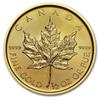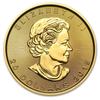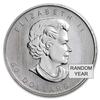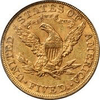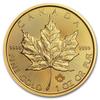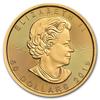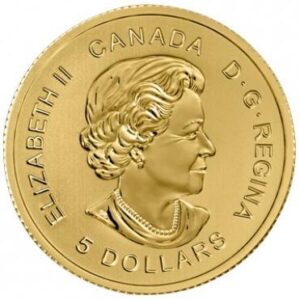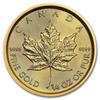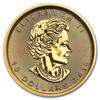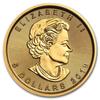View More
Show All Results...
Click to get started or call the number below to speak with one of our Account Executives for more information about availability, pricing, and questions.
In 1915, United States Mint Director Robert W. Woolley invited three noted sculptors to design templates for three silver coins that would become the Mercury dime, the Standing Liberty quarter, and the Walking Liberty half-dollar (also referred to as “Liberty Walking”, or “Walker” for short). A. A. Weinman was awarded the designs for both the dime and the half-dollar.
Design of the Walking Liberty Half-Dollar – The coin’s obverse (front) depicts Lady Liberty cloaked in Old Glory walking towards a new day. She carries branches of laurel and oak in her arms. The motto “IN GOD WE TRUST” rests to the right of her calf. The Walking Liberty half-dollars are the last regular issue silver coins to feature Miss Liberty, although the U.S. Mint decided to copy the design for its Silver American Eagle bullion coins.
The reverse (back) of the coin features an American bald eagle with wings spread proudly. Weinman’s initials, AAW, can be found under its wing tip. It rests on a rocky crag with mountain pine sapling springing from its cracks. The Mint Mark signifying the city where these coins were struck is located just below the pine sapling for all coins struck after 1917 (for the first year and a half, it was located on the obverse under the motto).
Walking Liberty Half-Dollar Coin Minting Information – Walking Liberty half-dollars were minted from 1916 until 1947, except for 1922 and between the years of 1924-26 and 1930-32. These silver half-dollars span 30.6 millimeters in diameter and have a weight of 12.50 grams. Composed of 90 percent silver and 10 percent copper, each Walker contains a net silver content of 0.36169 ounces.
A.A. Weinman – Adolph A. Weinman immigrated to the United States from Germany in 1880 at the age of ten. He studied under the tutelage of Augustus Saint-Gaudens, designer of the $20 Saint-Gaudens gold piece, (often considered America’s most beautiful coin). It is interesting to note that the designs for the gold and silver bullion coins of the United States were taken from designs created by teachers and pupils.
| Size | Purity | Weight | Metal Content | Diameter |
|---|---|---|---|---|
 $.50 Walking Liberty Silver Coin $.50 Walking Liberty Silver Coin | 90% | 0.36 oz. | Silver | 30.60 mm |
Specifications are obtained from sources believed to be reliable. However, Goldline does not guarantee their accuracy.
In 1915, United States Mint Director Robert W. Woolley invited three noted sculptors to design templates for three silver coins that would become the Mercury dime, the Standing Liberty quarter, and the Walking Liberty half-dollar (also referred to as “Liberty Walking”, or “Walker” for short). A. A. Weinman was awarded the designs for both the dime and the half-dollar.
Design of the Walking Liberty Half-Dollar – The coin’s obverse (front) depicts Lady Liberty cloaked in Old Glory walking towards a new day. She carries branches of laurel and oak in her arms. The motto “IN GOD WE TRUST” rests to the right of her calf. The Walking Liberty half-dollars are the last regular issue silver coins to feature Miss Liberty, although the U.S. Mint decided to copy the design for its Silver American Eagle bullion coins.
The reverse (back) of the coin features an American bald eagle with wings spread proudly. Weinman’s initials, AAW, can be found under its wing tip. It rests on a rocky crag with mountain pine sapling springing from its cracks. The Mint Mark signifying the city where these coins were struck is located just below the pine sapling for all coins struck after 1917 (for the first year and a half, it was located on the obverse under the motto).
Walking Liberty Half-Dollar Coin Minting Information – Walking Liberty half-dollars were minted from 1916 until 1947, except for 1922 and between the years of 1924-26 and 1930-32. These silver half-dollars span 30.6 millimeters in diameter and have a weight of 12.50 grams. Composed of 90 percent silver and 10 percent copper, each Walker contains a net silver content of 0.36169 ounces.
A.A. Weinman – Adolph A. Weinman immigrated to the United States from Germany in 1880 at the age of ten. He studied under the tutelage of Augustus Saint-Gaudens, designer of the $20 Saint-Gaudens gold piece, (often considered America’s most beautiful coin). It is interesting to note that the designs for the gold and silver bullion coins of the United States were taken from designs created by teachers and pupils.
| Size | Purity | Weight | Metal Content | Diameter |
|---|---|---|---|---|
 $.50 Walking Liberty Silver Coin $.50 Walking Liberty Silver Coin | 90% | 0.36 oz. | Silver | 30.60 mm |
Specifications are obtained from sources believed to be reliable. However, Goldline does not guarantee their accuracy.

